Last updated: September 21, 2023
Seeing a thin horse with visible ribs can be alarming. While it’s urgent to address, it’s a problem many horse owners face and can fix.
You might think just giving more food will help, but it’s not that simple. Overfeeding can lead to health issues. The solution is providing the right food, making sure the horse exercises, and providing proper care.
In this guide, you’ll learn how to put weight on a horse the right way. I’ll provide essential tips and insights to enhance your horse’s appearance and well-being. So, continue reading to learn how to improve your equine partner’s health.
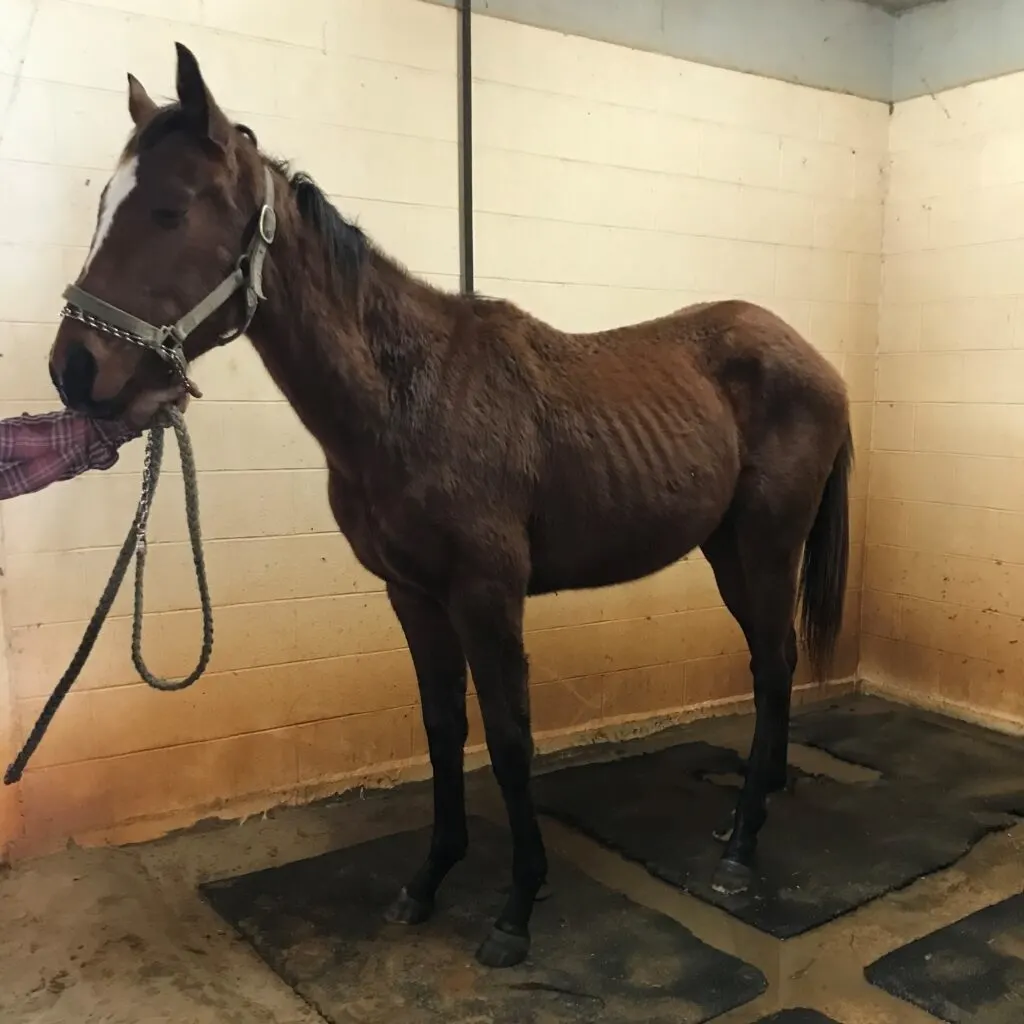
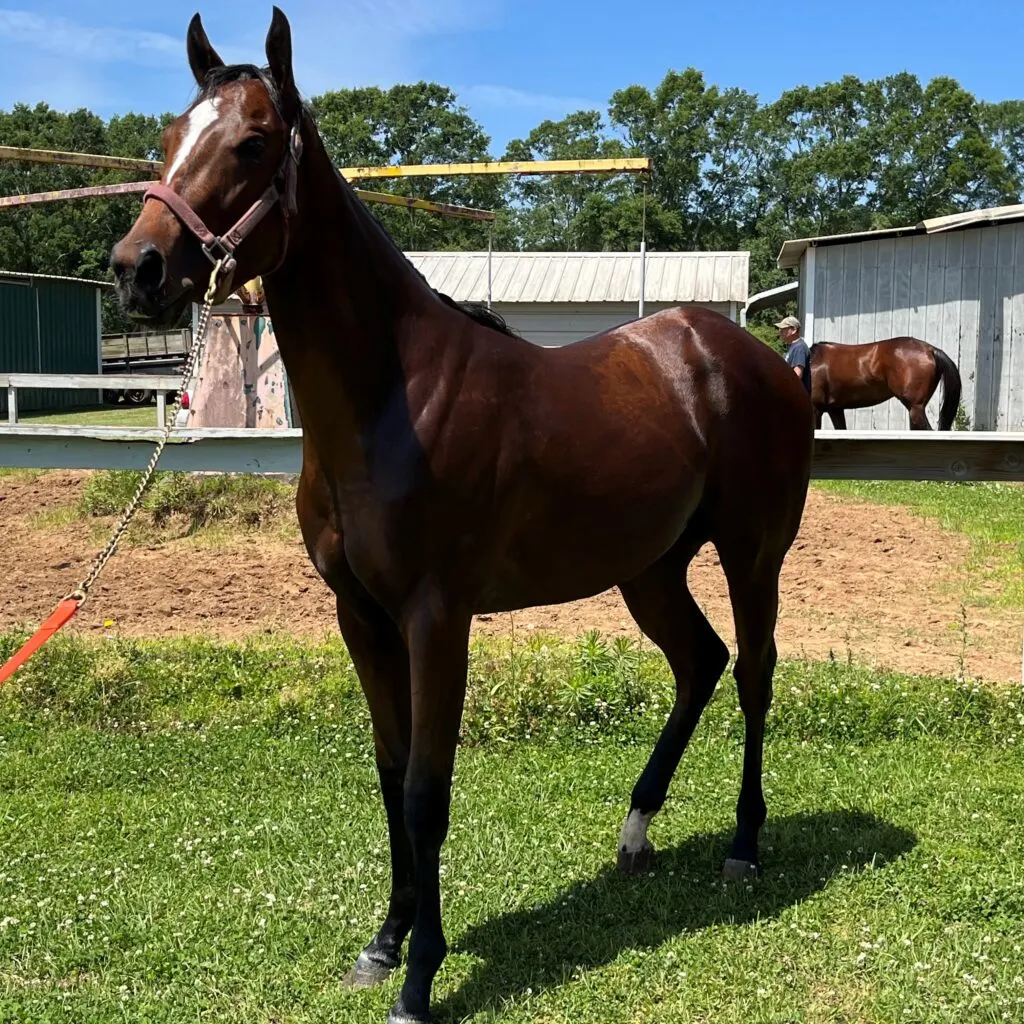
Understanding the Needs of Your Horse
Gaining weight and muscle isn’t a one-size-fits-all process for horses. Just like people, horses have individual needs that must be carefully assessed. Let’s dive into understanding what your horse specifically requires.
Assessing the Current Weight and Muscle Condition
The first step in a successful weight gain strategy is to gauge your horse’s current condition accurately. Here’s how to do it:
- Visual Inspection: Look for visible ribs, sunken hips, or a tucked-up abdomen. These signs can indicate underweight conditions.
- Body Condition Scoring (BCS): The BCS systematically determines a horse’s fat and muscle condition. Scores range from 1 (emaciated) to 9 (obese), with an ideal range between 4 and 6.
- Weighing: If possible, weigh your horse using a livestock scale. Approximate measurements can also be made using a weight tape.
Consulting with a Veterinarian or Equine Nutritionist
- Professional Opinion: An experienced vet or equine nutritionist can provide tailored recommendations. They’ll consider breed, age, activity level, and other unique factors.
- Diet Planning: A nutritionist can create a customized feeding plan that focuses on weight gain and muscle development, aligning with your horse’s needs.
Identifying Underlying Health Conditions
- Health Examination: It’s essential to rule out underlying health issues that might be causing weight loss. Problems like dental issues, parasites, or metabolic disorders can significantly impact a horse’s weight.
- Lab Tests: Sometimes, a blood test or other diagnostic tools may be necessary to identify hidden health challenges.
In a nutshell, understanding your horse’s needs is not a mere observation task but a collaboration of keen assessment, professional insight, and, if needed, medical investigation. By starting with a clear understanding of where your horse stands, you’re setting the stage for successful weight gain and muscle development. It’s a journey that begins with knowledge and leads to a healthier, happier horse.
Remember, your horse’s well-being is a priority, and taking these steps ensures that you’re addressing weight gain from an informed and compassionate perspective.
How to Get a Horse to Gain Weight Quickly
To achieve the goal of helping your horse gain weight and muscle, it’s crucial to consider a comprehensive nutritional approach that goes beyond calories.
Here’s an in-depth look at the main components to focus on:
Quick Weight Gain Solutions
For horses that need to gain weight swiftly, here’s how to do it thoughtfully:
- High-Calorie Feeds and Supplements: Oils, rice bran, or flaxseed are great sources of healthy fats that add calories without excess starch. Specialized weight gain supplements are also available.
- Hay Choices: Quality forages like alfalfa hay can be essential in adding calories. Ensure the hay is fresh, free of mold, and appropriately stored.
- Balanced Diet Including Essential Vitamins and Minerals: Minerals like Calcium and Phosphorus, along with vitamins like Vitamin E, are crucial. Consulting with an equine nutritionist ensures a proper balance.
Building Equine Muscle through Nutrition
Building muscle is an art that requires precise nutritional attention:
- Protein Sources and Amino Acids: Protein is a must for muscle development. Include alfalfa or soybean meal for high-quality protein, focusing on essential amino acids like lysine.
- Hay and Fiber: Fiber, especially digestible fiber, is vital for healthy digestion and provides a steady energy source. Grass hay or beet pulp is an excellent source of digestible fiber.
- Feeding Schedule and Portion Control: Divide the meals into multiple small portions and feed at consistent times. It aids in digestion and nutrient absorption.
- Understanding Starch and Sugar: While starch can be a source of energy, excessive starchy feeds (like corn) can lead to digestive issues. Balance is key.
Considerations for Different Needs
- Underweight Horses: Focus on energy-dense feeds with higher fat content. More alfalfa can be beneficial, given its higher calorie and protein content.
- Muscle Building in Athletic Horses: Emphasize protein and controlled starch levels. Exercise must complement the diet, as muscle development needs both nutrition and work.
Putting weight and muscle on a horse involves an intricate understanding of nutrition. It’s not just about more food but the right kinds of food. Hay, digestible fibers, quality proteins, and balanced starch levels all play a part. Collaborating with a veterinarian or equine nutritionist can help craft a precise diet that fits your horse’s unique needs.
Remember, patience and observation are crucial. Watch your horse’s progress and adjust as needed. Your dedication to understanding and applying these nutritional principles will not only see your horse gain weight and muscle but do so in a way that enhances overall health and happiness.
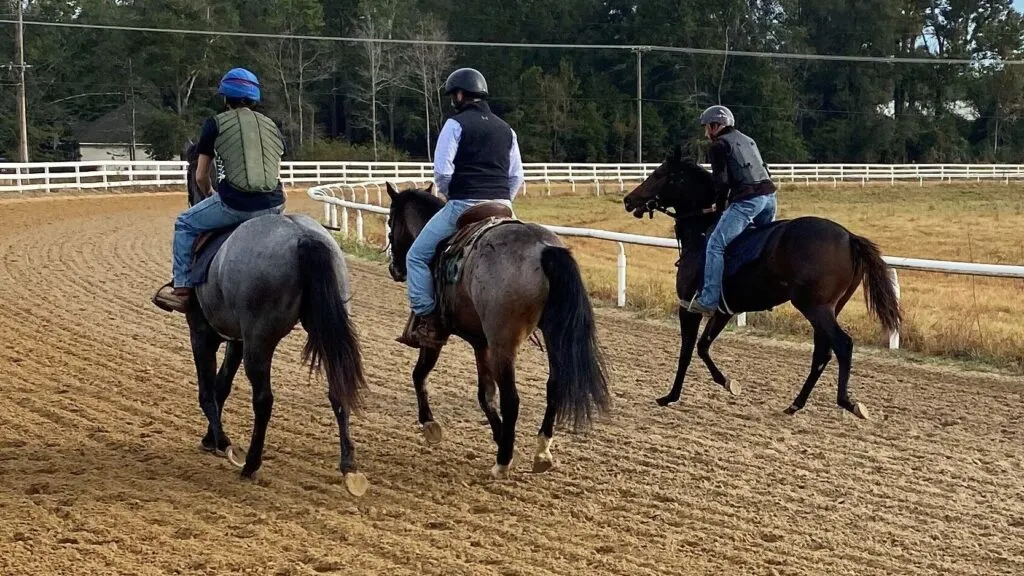
How to Get a Horse to Gain Weight and Muscle
Exercise is not just about burning calories; it’s also a vital part of building muscle and overall strength in horses. Let’s explore how to craft an effective exercise and training regimen for your horse.
How to Build Muscle
Building muscle in a horse is a combination of appropriate exercise and sufficient recovery. Here’s how to do it:
- Appropriate Exercise Routines: Start with low-impact exercises like walking and trotting, then gradually introduce more intense work such as hill-climbing and cantering. Variety is key to keeping the muscles engaged.
- Importance of Rest and Recovery: Muscle growth happens during rest, not during the exercise. Schedule regular rest days, and monitor your horse for signs of fatigue or overwork.
Tailoring Exercise to Individual Needs
Every horse is unique, and their exercise plan should reflect that:
- Considering Age: Younger horses may require a gentler approach, while older horses may need special attention to flexibility and joint health.
- Factoring in Breed: Some breeds naturally carry more muscle, while others may need more targeted training.
- Assessing Current Fitness Level: Understanding where your horse is starting from helps tailor the intensity and duration of workouts.
Developing a solid exercise and training regimen isn’t just about working your horse hard. It’s a nuanced approach that considers the type of exercise, the amount of rest, and your horse’s specific needs.
Keep in mind that building muscle is a gradual process that requires patience and observation. Regularly consult your veterinarian or a professional trainer to ensure the program is effective and safe.
By paying attention to details and adapting as you go, you can set your horse on a path to strong, healthy muscles. It’s not just about how hard they work but how smart you work together. Your horse’s well-being is worth the effort.
Monitoring and Adjusting the Program
A weight gain and muscle-building program for your horse isn’t something you can set and forget. It’s a dynamic process that requires regular monitoring and adjustments. Here’s how to make sure you’re on the right track:
Regular Weight and Body Condition Scoring
- Weighing: Regularly weighing your horse helps you track progress and make informed decisions. Monthly weigh-ins can be a good starting point.
- Body Condition Scoring (BCS): Continually assessing your horse’s body condition helps you understand not just weight gain but also how the weight is being distributed, whether as fat or muscle.
Adjusting Diet and Exercise as Needed
- Flexibility in Feeding: If you notice that weight gain is too slow or fast, the diet may need to be adjusted. Consult with an equine nutritionist to ensure that changes align with your horse’s overall well-being.
- Exercise Modifications: Regular monitoring may reveal the need to increase or decrease exercise intensity, duration, or type. Work with a professional trainer to modify the routine safely.
Signs of Progress and When to Make Changes
- Positive Signs: Look for a fuller body, increased energy levels, and a shinier coat. These are usually indicators of good health.
- Warning Signs: If you notice excessive fatigue, irritability, or other unusual behaviors, it may signal that something in the program needs to change.
- Regular Check-ins: Frequent check-ins with a veterinarian or equine specialist can provide professional insight into when and how to make changes.
A successful weight gain and muscle-building program for your horse is a journey, not a destination. It’s about continuous observation, reflection, and adaptation. Your equine friend relies on your careful attention and willingness to modify the plan as needed.
Remember, there’s no failure in making adjustments. It’s all part of the process. What matters most is that you’re responsive to your horse’s needs, always seeking the healthiest and most joyful path forward. With dedication and mindfulness, you’ll see your horse thrive in strength and vitality, reflecting the love and care you put into every step of the program.


Case Study
Above is a picture of Jimmy, a two-year-old Thoroughbred colt we bought along with four others. All of them were significantly underweight. The first picture was taken on February 2, and the second was taken about eight weeks later in April.
The first step was a thorough veterinary examination, revealing a significant worm burden. A deworming protocol was put in place to address this. Nutritionally, Jimmy transitioned to a suitable diet for his new lifestyle.
This included high-quality hay, a balanced concentrate, and a high-fat supplement to provide extra calories. As for exercise, a program of long, slow rides was introduced to help him build muscle without burning excessive calories.
With these interventions, Jimmy started to gain weight. The worm burden was reduced, his coat gained shine, and he became more filled out and muscular.
A thin horse might be at risk for many health problems, so if your horse isn’t bouncing back, it’s essential to work with an equine veterinarian and nutritionist to adjust its feeding plan. When feeding horses that lost significant weight, increase calories slowly to avoid upsetting their digestive tract or causing colic due to sudden diet changes. And it’s essential to know the correct weight for your horse.
Best Practices and Common Mistakes to Avoid
When it comes to helping your horse gain weight and muscle, there are certainly right ways to go about it. But there are also common pitfalls that can derail your efforts. Let’s explore best practices and the mistakes you’ll want to steer clear of:
Avoiding Rapid Weight Gain that May Lead to Health Issues
- Best Practice: Gradual weight gain, targeting a reasonable amount of weight increase over a set time (e.g., 50 pounds over a month).
- Common Mistake: Rushing the process leads to conditions like colic or laminitis. This can happen with sudden high-calorie diets or over-supplementation.
Ensuring Muscle Growth without Overworking the Horse
- Best Practice: Develop a structured exercise regimen that gradually increases in intensity, always allowing sufficient rest and recovery.
- Common Mistake: Over-exercising the horse in an attempt to quickly build muscle, leading to fatigue, stress, or even injury.
Balancing the Needs of Individual Horses
- Best Practice: Recognizing each horse has unique needs based on age, breed, and current fitness level and customizing the program accordingly.
- Common Mistake: Applying a one-size-fits-all approach, ignoring the individual characteristics and needs of the horse, which can hinder progress or cause harm.
The road to a healthier, more robust horse is one filled with understanding, patience, and attention to detail. By embracing the best practices and avoiding common mistakes, you’re setting up a path filled with success and well-being for your equine friend.
Always remember that professional guidance from veterinarians, nutritionists, or trainers can be invaluable in this journey. Their expertise can help you navigate the complexities and individualities of equine care. With the right approach, your horse will not just gain weight and muscle but will thrive, reflecting the deep care and commitment you’ve invested.

Understanding Horse Weight
When it comes to horse weight, several factors come into play. One of the primary factors is breed. Different breeds have different healthy weight ranges. For example, a Thoroughbred is going to weigh significantly less than a Clydesdale.
However, there’s still considerable variability within the same breed depending on the individual horse’s genetics and environment. Age also affects a horse’s weight. Young, growing horses may be leaner, while older horses often struggle with maintaining weight due to dental issues or slowed metabolism.
Speaking of metabolism, like in humans, horses have varying metabolic rates. Some horses, often referred to as “easy keepers,” can maintain or even gain weight easily, while others, known as “hard keepers,” struggle to keep weight on.
Now, let’s talk about how to identify an underweight horse. Knowing what’s normal for your specific horse is the first step. Regularly assessing your horse, both by looking and feeling, is crucial. In a healthy horse, the ribs should not be visible, but they should be easily felt with light pressure.
You should also take note of the horse’s overall body condition. A horse is likely underweight if there are noticeable hollows around the hips or the backbone is prominently raised. There are also scientific methods for assessing your horse’s body condition, such as the Henneke Body Condition Scoring system.
This widely used method scores horses on a scale from 1 (emaciated) to 9 (obese) based on fat deposition in specific areas. It’s a valuable tool that can help you objectively assess your horse’s weight and track changes over time.
Remember, the goal is not just weight gain but healthy weight gain. It’s about your horse’s overall well-being. Understanding what influences horse weight and recognizing signs of being underweight are the first steps toward that goal.

Causes of Weight Loss in Horses
Several factors can contribute to weight loss in horses. Let’s dive into a few common ones. First, dental issues can greatly impact a horse’s ability to chew and digest food properly. Problems like sharp teeth edges, tooth loss, or infections can make eating painful and lead to weight loss.
Parasites are another common culprit. Internal parasites, such as worms, can damage a horse’s intestinal tract and limit the absorption of nutrients, which, in turn, results in weight loss. Regular deworming and fecal tests can help manage this issue.
Poor nutrition is also a major cause of weight loss. If a horse isn’t getting the right balance of nutrients or enough calories in its diet, it will lose weight over time. This could be due to poor quality feed, insufficient feed, or a diet that doesn’t match the horse’s needs.
Other potential causes include chronic diseases, stress, and aging. Diseases like ulcers, liver or kidney problems, or cancer can lead to weight loss. Stress, whether from environmental changes, lack of companionship, or rigorous training, can also have an impact.
Lastly, older horses often lose weight due to decreased metabolic efficiency and dental issues. Given these myriad potential causes, if your horse is losing weight, it’s essential to get a thorough veterinary examination.
Your vet can help pinpoint the exact cause, which can range from simple to complex. They might examine the horse’s teeth, perform blood tests, check for parasites, or assess the horse’s diet and living conditions.
By identifying the specific cause, you’ll be able to address the weight loss effectively and ensure your horse returns to a healthy state. It’s always better to consult with a professional rather than guessing and potentially missing something important.
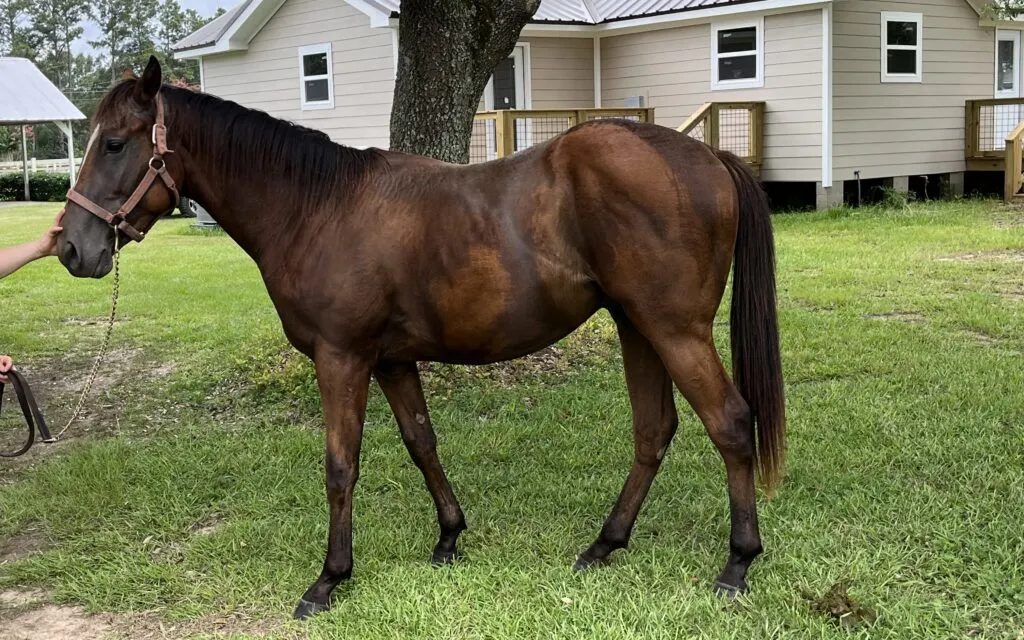
7 Essential Steps to Put Weight on Your Horses.
A well-structured plan is essential when it comes to helping your horse regain lost weight or maintain a healthy body condition. Here are seven expert-recommended steps to promote a steady and healthy weight gain for your equine companion.
- Assess Current Weight and Condition: Regularly evaluate your horse’s weight and overall body condition. This will help you understand if your horse is underweight and track progress over time.
- Consult a Veterinarian: If you suspect your horse is underweight, get a thorough veterinary examination. This will help rule out any underlying health issues that might be causing weight loss.
- Understand Your Horse’s Dietary Needs: Different horses have different nutritional requirements based on factors like age, breed, and activity level. Ensure your horse’s diet is meeting these needs.
- Improve the Diet: If needed, make adjustments to the diet. This could involve increasing feed quantity, improving forage quality, adding energy-dense feeds, or including dietary supplements.
- Implement an Exercise Program: Regular, appropriate exercise can help promote healthy weight gain. Design an exercise program that helps build muscle without causing excessive calorie loss.
- Monitor Progress Regularly: Keep track of your horse’s weight and condition as you implement these changes. Regular monitoring allows for timely adjustments and helps ensure the weight gain strategies work.
- Patience is Key: Weight gain is a gradual process that requires time and patience. Celebrate small victories, and don’t get discouraged if progress seems slow. The ultimate goal is to improve your horse’s overall health and well-being.
Below is a YouTube video that explains how to feed your horse to help it gain weight.
Strategies for Promoting Muscle Development in Horses
A proper diet that includes amino acids, the building blocks of proteins, and exercise is needed to develop their muscles. Horses can only synthesize 12 of the 22 amino acids responsible for protein production, so they must get the other 10 essential ones from food.
When these amino acids come together, they form protein chains that grow muscle. And while it’s possible to build muscle over the short term by feeding high protein diets, for optimal muscle development, your horse needs to consistently take in the correct amount of amino acids over its lifetime.
Muscles are constantly breaking down and building up, so they need food to fortify their muscles continually. Exercise also plays a crucial role in building muscle. Regular workouts are essential to promote muscle growth. Horse owners must exercise their horses on an ongoing basis for healthy muscle development and maintenance.
Physical activity works hand-in-hand with amino acids–the building blocks of protein structures within cells–for more significant metabolic function and physical performance!

What is the best muscle builder for a skinny horse?
You need the correct amount of amino acids to add muscle, so start by evaluating your feeding program. Also, use a good feed; Purina, for example, has good products. I especially like their senior feeds. If you’re using these, your horse may be getting everything it needs, and additional protein can’t be absorbed and passed through in your horse’s urine.
So don’t waste your money, but if your horse needs additional amino acids, a few products are available, such as Science Supplements – The Equine Nutrition Specialists Muscle Builder and Finish Line Muscle Tone. These products are good sources of amino acids needed for your horse’s muscle development.
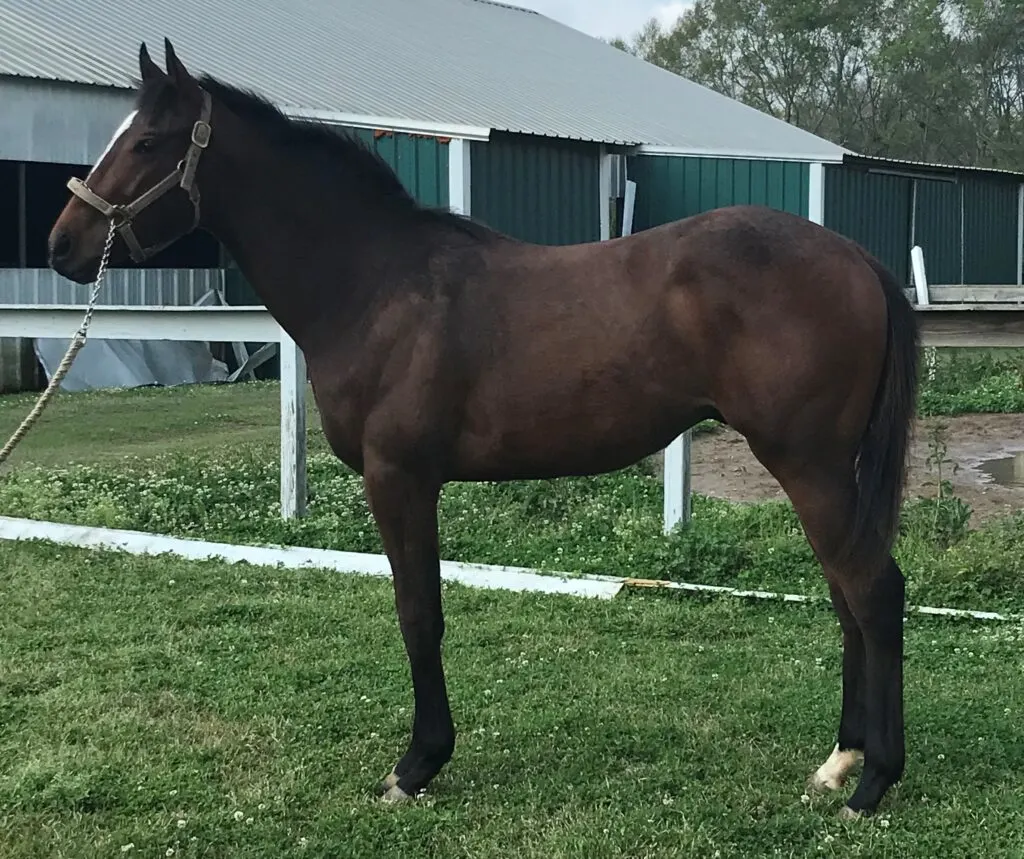
How do you build muscle in a horse’s hind end?
Strong hindquarters are key to a horse’s performance and overall health, so strength training after significant weight loss can be crucial. The horse pictured above was one of five two-year-olds we bought that were severely underweight.
To build muscle in these young horses, we devised a regular riding and exercise program without focusing on one particular region of their body. By working on increasing their overall muscling, we noticed their hindquarters develop.
However, for some horses with weak hindquarters, we have concentrated on this region. A few things I find helpful are riding hills, backing my horse, and riding over obstacles.
Horses typically gain muscle throughout their bodies, not in one specific region. Your horse should develop its hindquarters muscles with proper feeding and regular exercise.
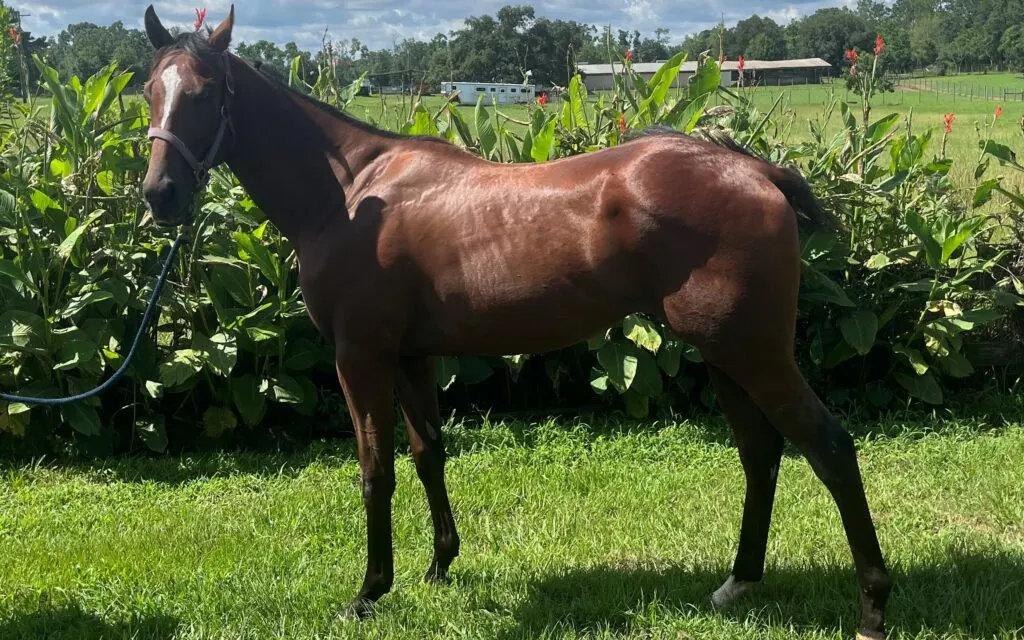
How do I build my horse’s topline?
Horses naturally have a strong topline, so if yours doesn’t, try to figure out the cause. Start with a vet check of your horse and also the fit of your saddle fit. It would be best if you cleared up the reason before working on building up the top line.
Once you have addressed the cause, you can implement a couple of exercises to strengthen your horses’ topline. The topline is your horse’s core, so a strong topline is essential to your horse’s overall physical health.
A good topline strengthening exercise is the baited carrot stretch. Hold a carrot between their front legs and coax them to get the treat. This exercise stretches out its neck and topline and helps strengthen it. Horses are captivated by carrots, and they will stretch their necks to reach a treat.
As I stated above, riding up and down hills is good for strengthening the hindquarter muscles, and it also builds up the horses’ topline. Start by riding hills at a slow pace until your horse’s fitness level allows you to pick up the pace.
Butt tucks are a fun and engaging way to build up your horse’s top-line and hindquarter muscles. To perform this exercise, run your fingers down the muscle creases on both sides of their rump while they’re standing still; they’ll immediately round out on themselves in response.
Conclusion: How to Put Weight on a Horse
It is vital to find out why your horse is losing weight. If they are healthy, they should return to their correct weight in four months, and you’ll notice a marked improvement within 90 days. Give them lots of grass hay mixed with alfalfa and beet pulp to put some pounds on a horse quicker.
Feeding them high-fat commercial grain mixes will also help speed up their growth. Please ensure they always have plenty of clean water available for drinking, too.
FAQ
Does lunging a horse build muscle?
Lunging is effective in building muscle and improves your horse’s natural balance. Working your horse in a circle encourages the muscles to develop. But it would be best to have a proper lunging routine so your horse gets the most from the exercise and doesn’t become unbalanced.
Do oats help horses gain weight?
Yes, oats are a good source of calories and can help horses gain weight when fed in appropriate amounts alongside other essential nutrients. For better nutrient absorption, horse owners should soak or steam oats before feeding them to their horses.
